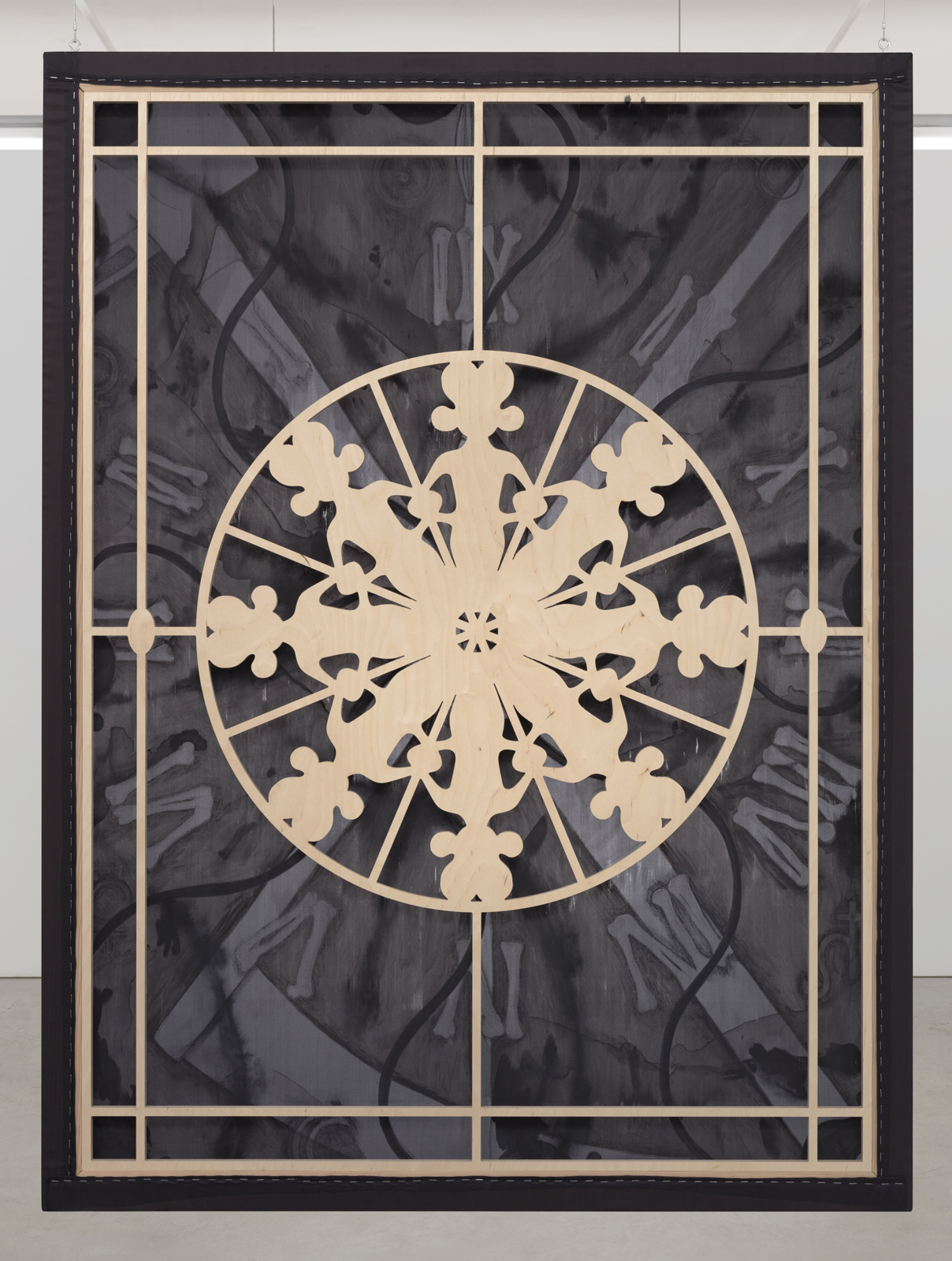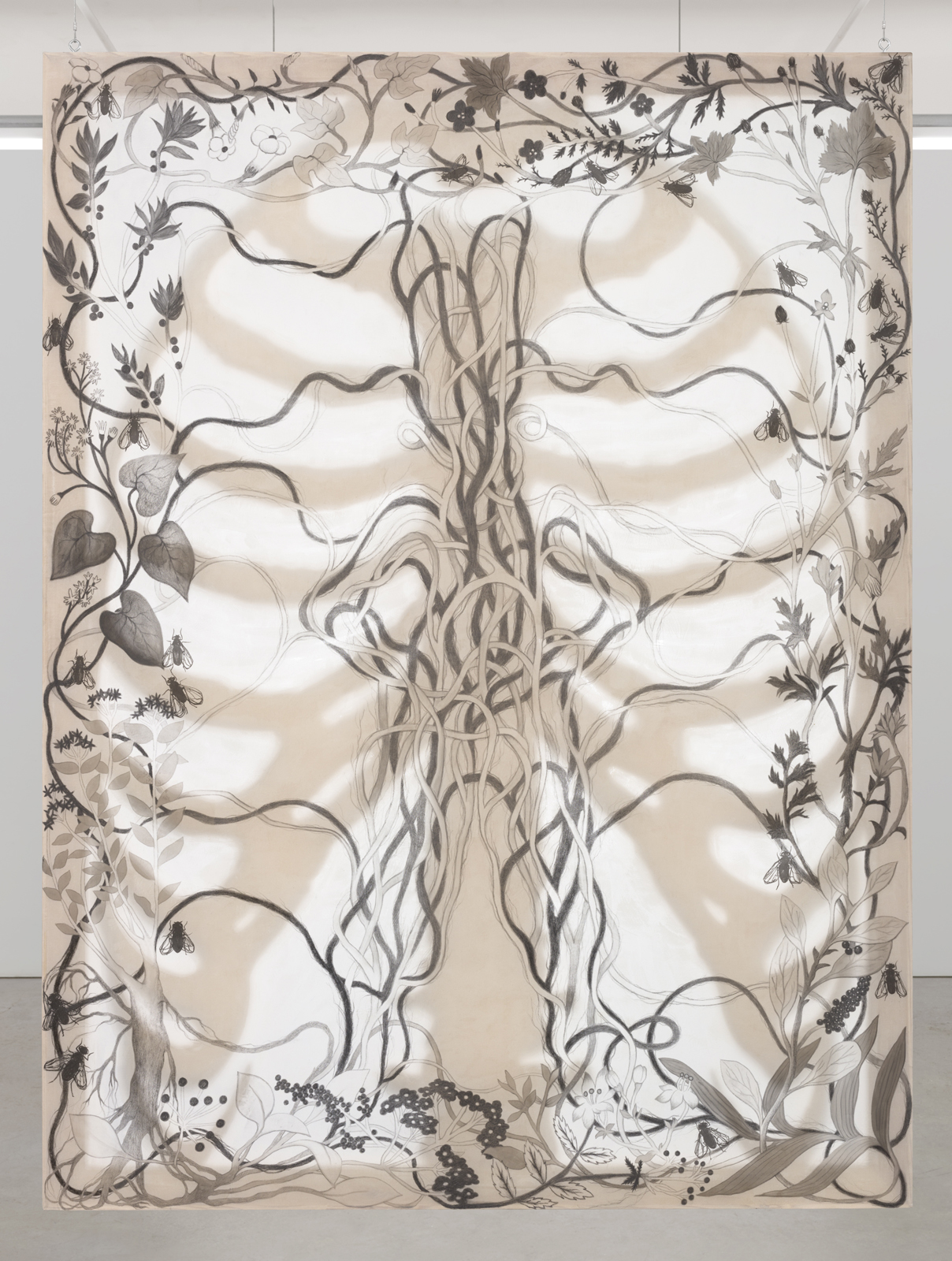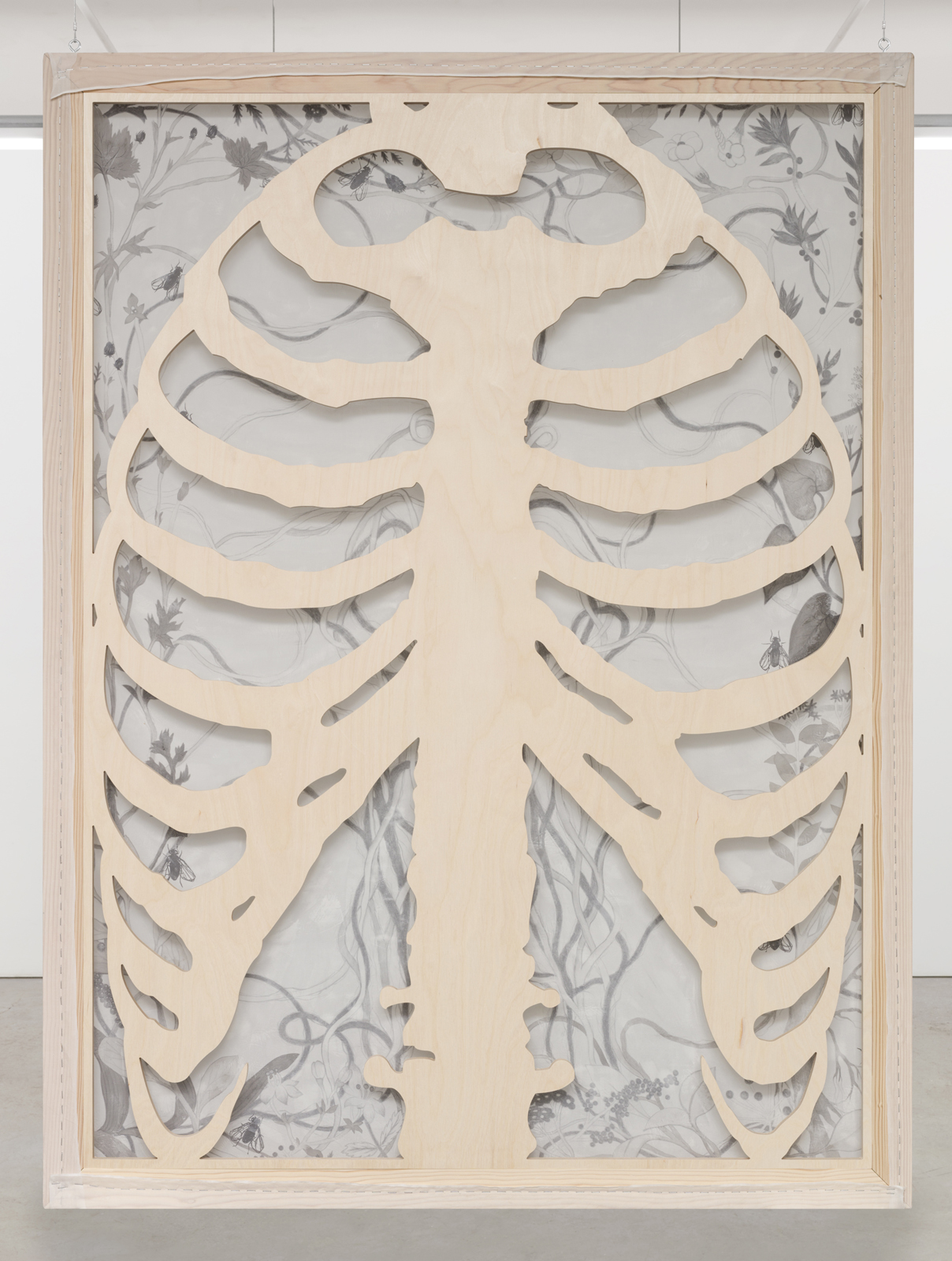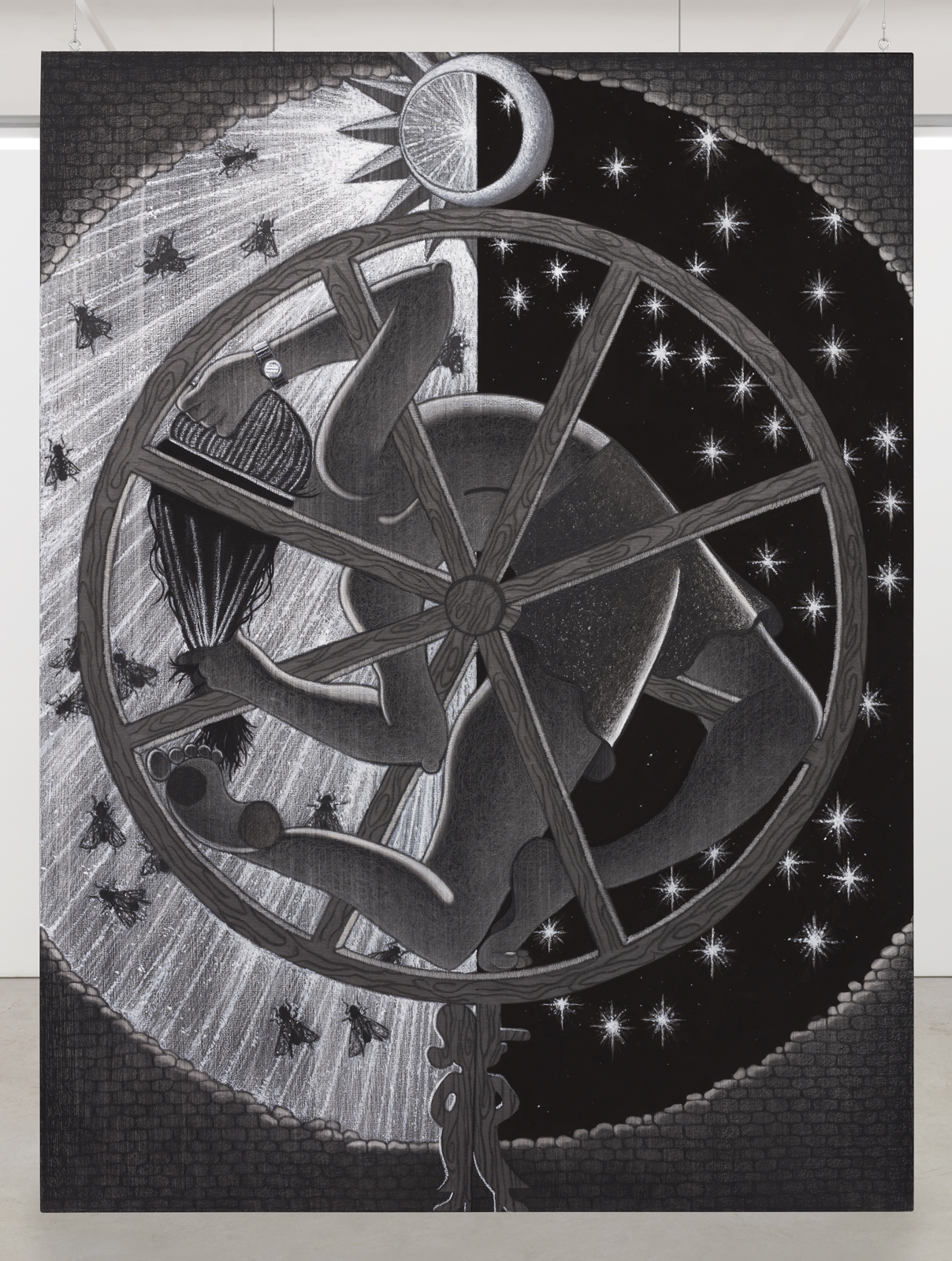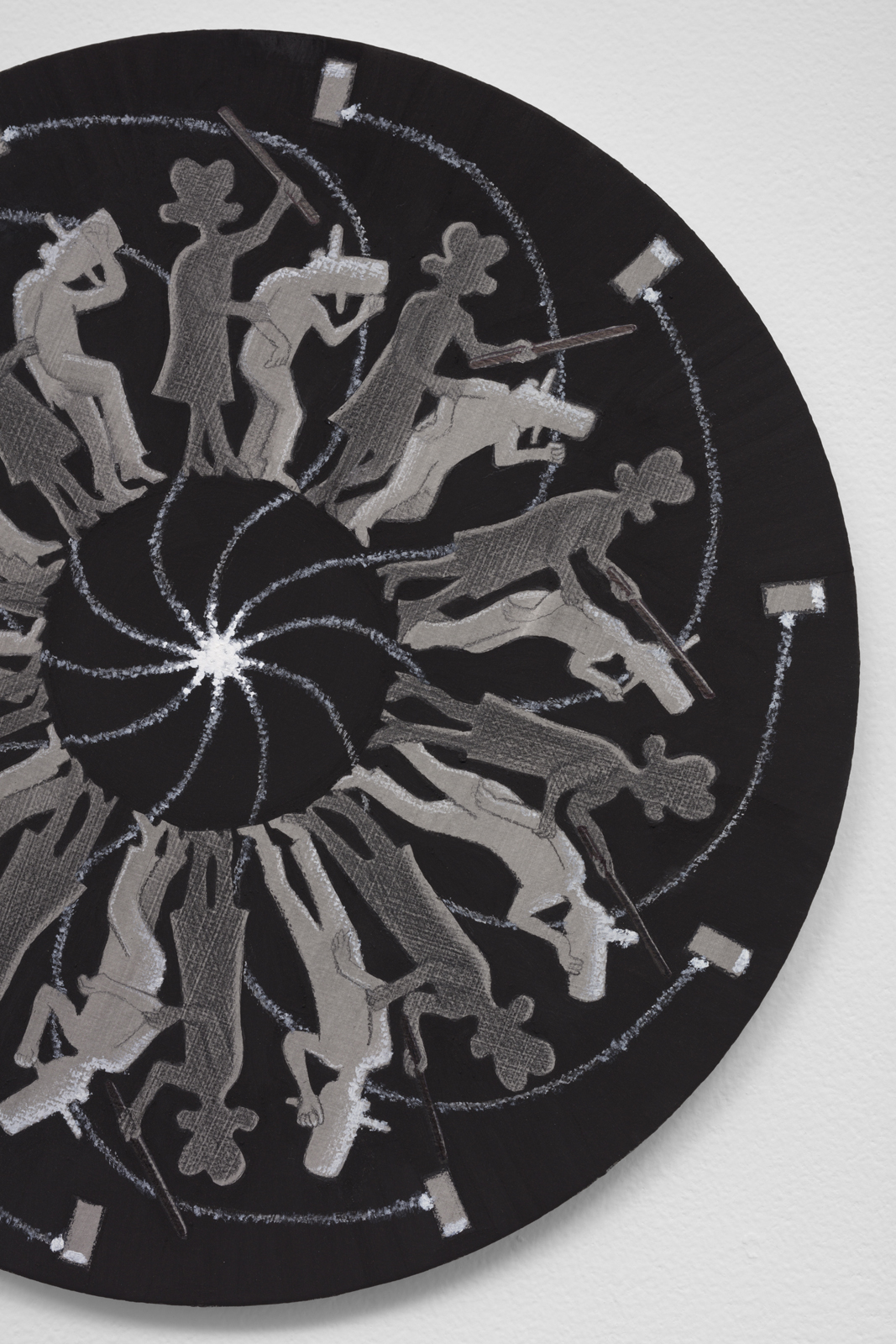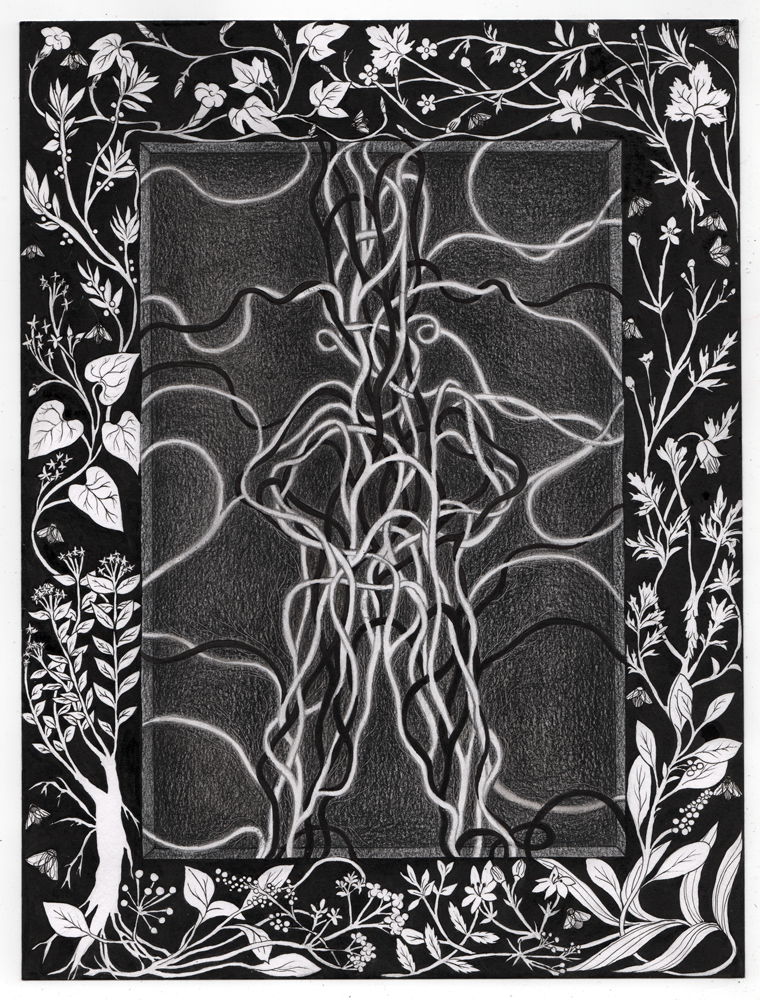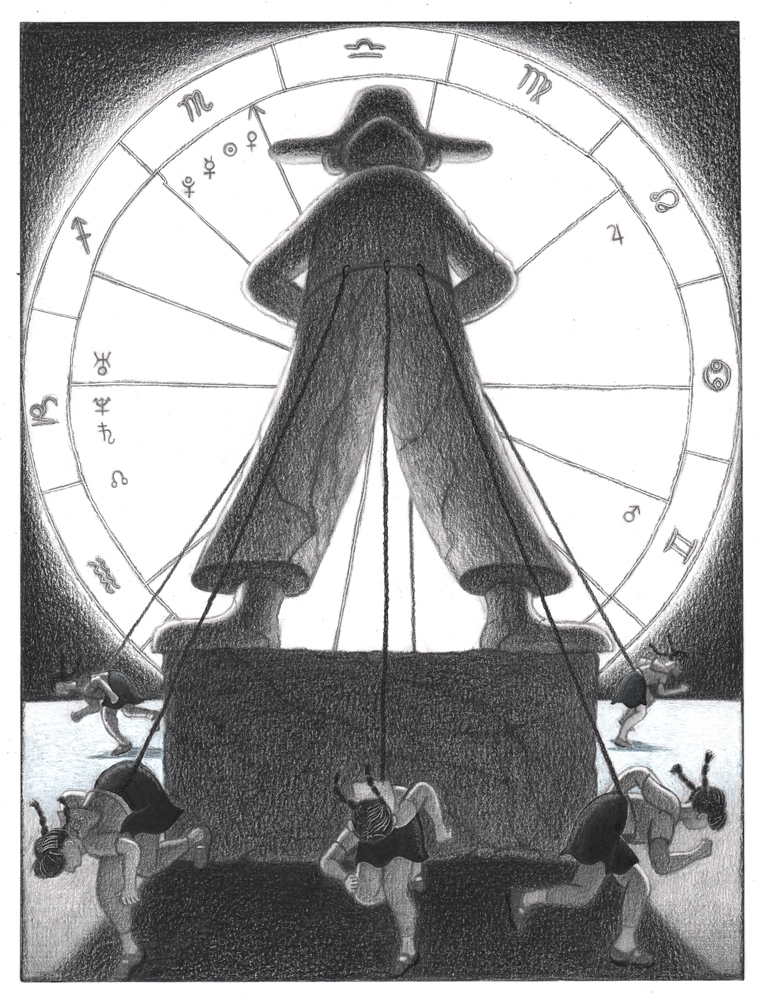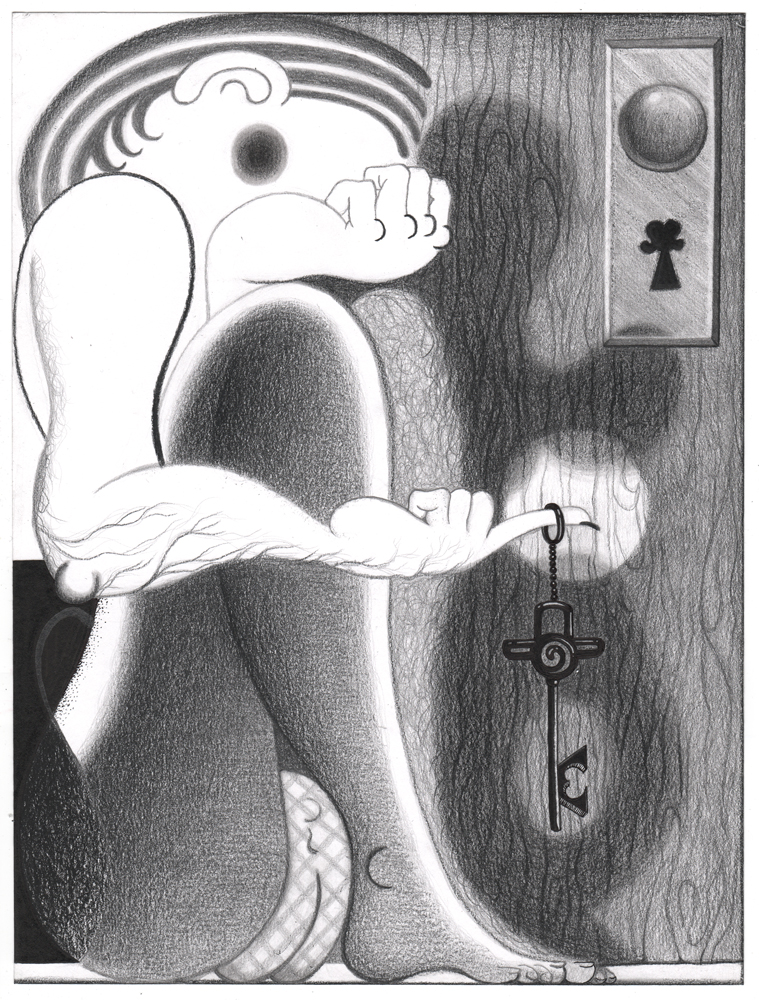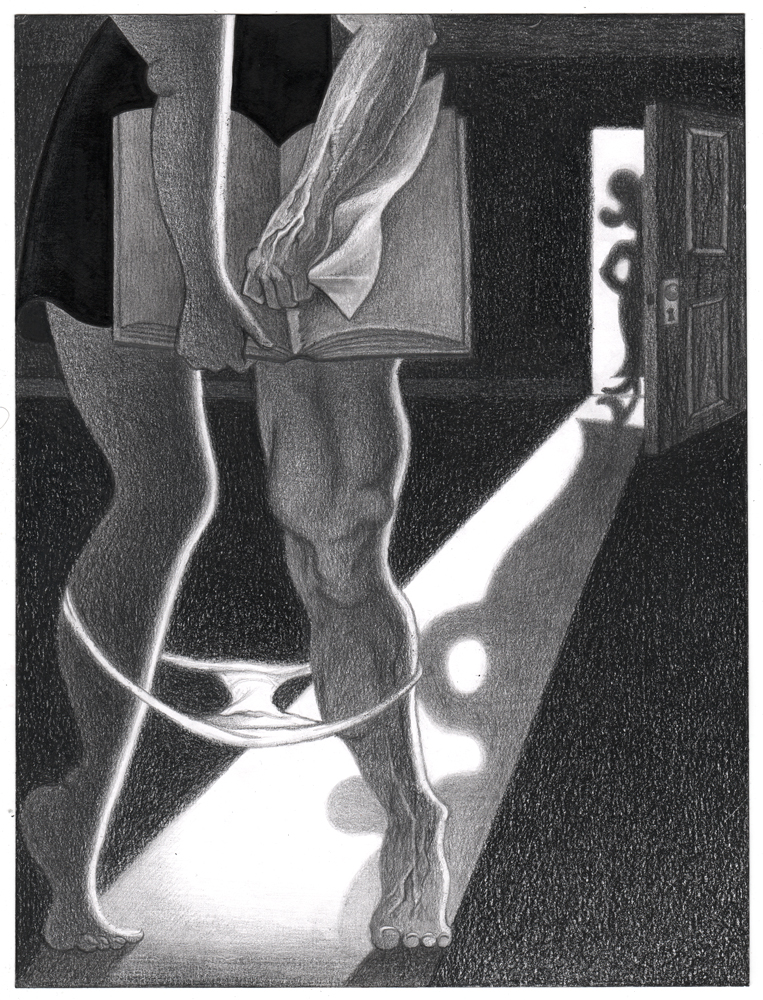Cindy Ji Hye Kim – Riddles of the Id
Cindy Ji Hye Kim
Riddles of the Id
| (Past) | 12.05.202012.05.20 — 27.06.202027.06.20 |
|---|---|
| (Gallery) | Rue de Livourne 32 Livornostraat |
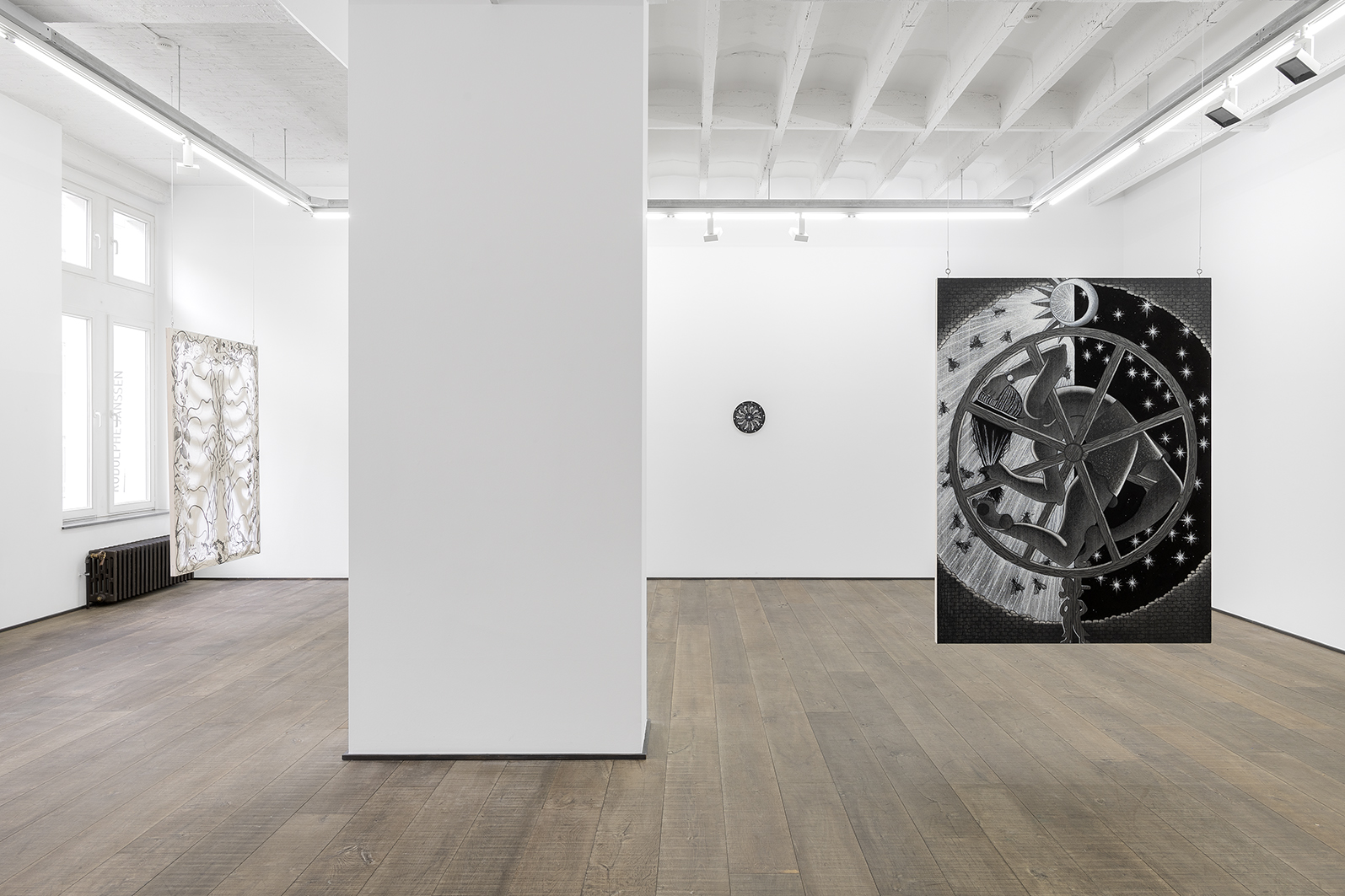

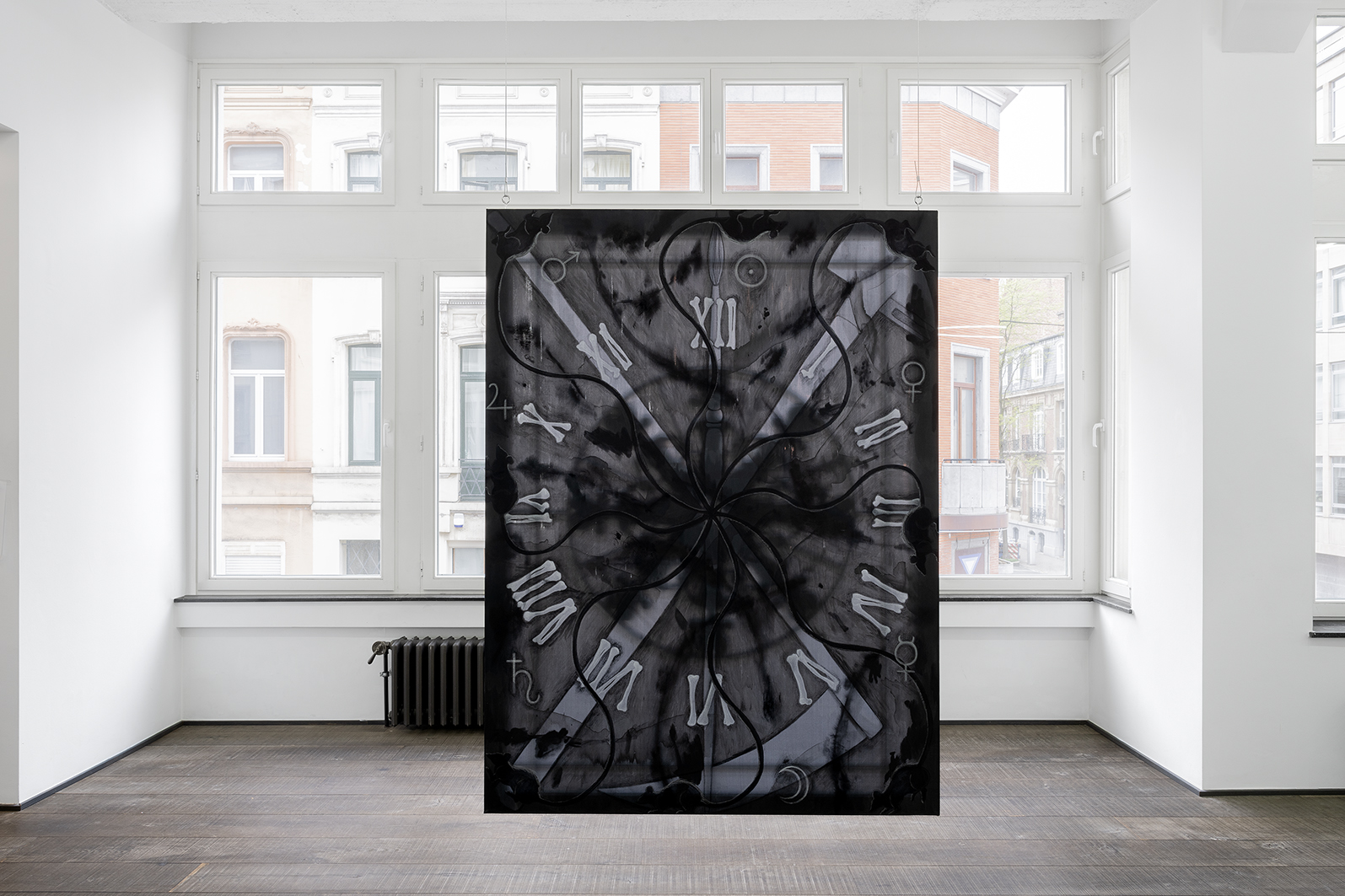

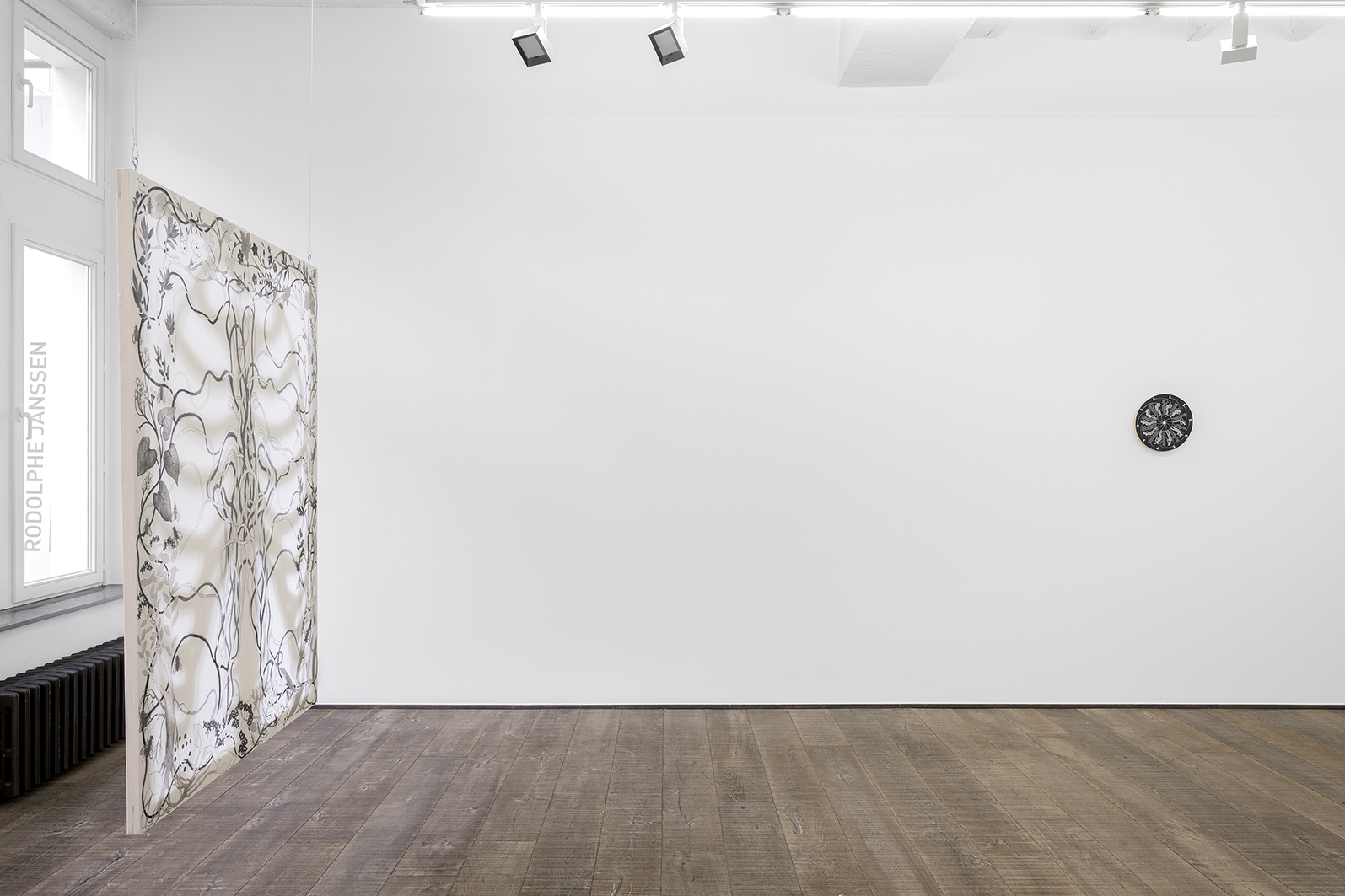

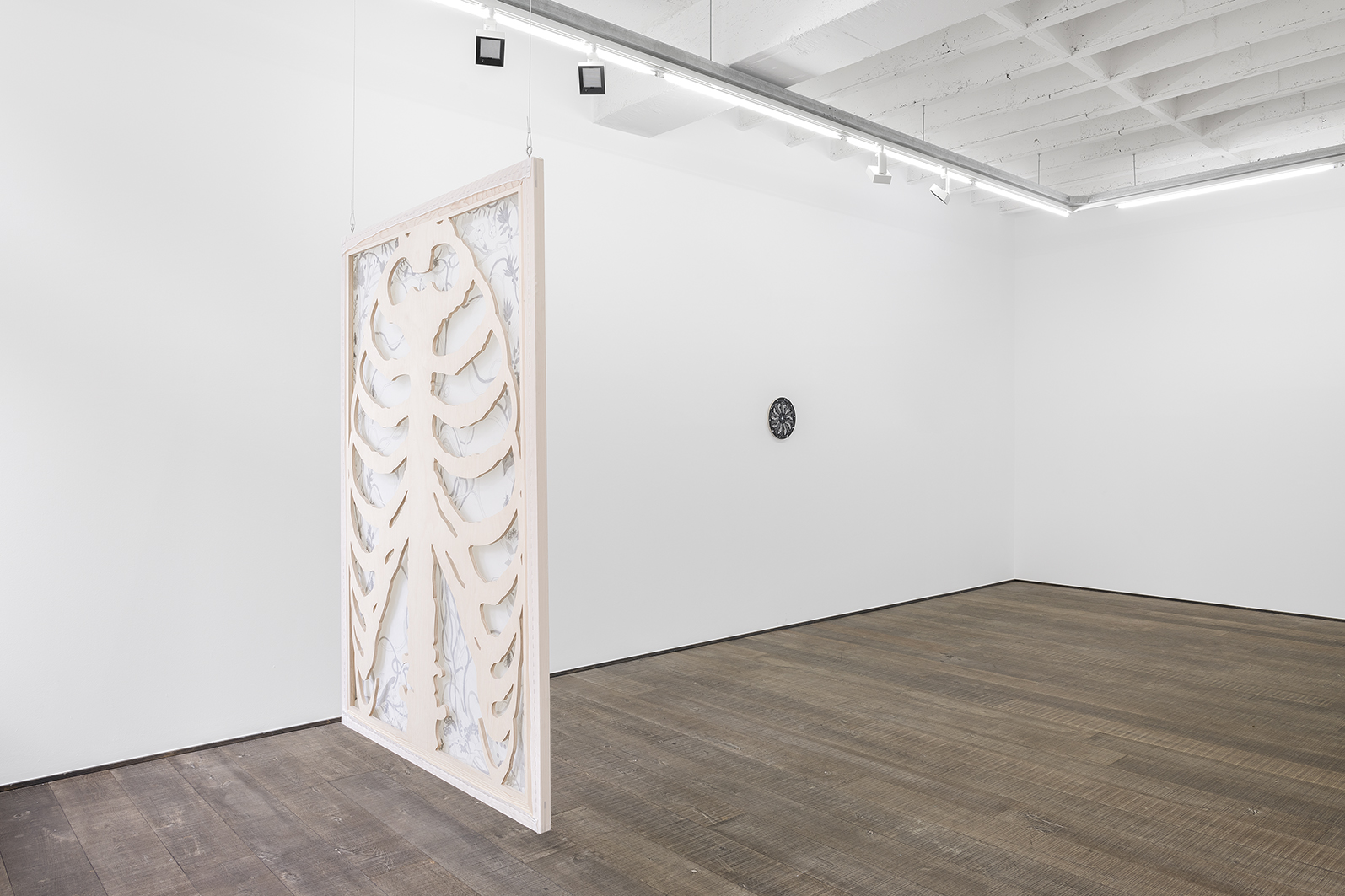
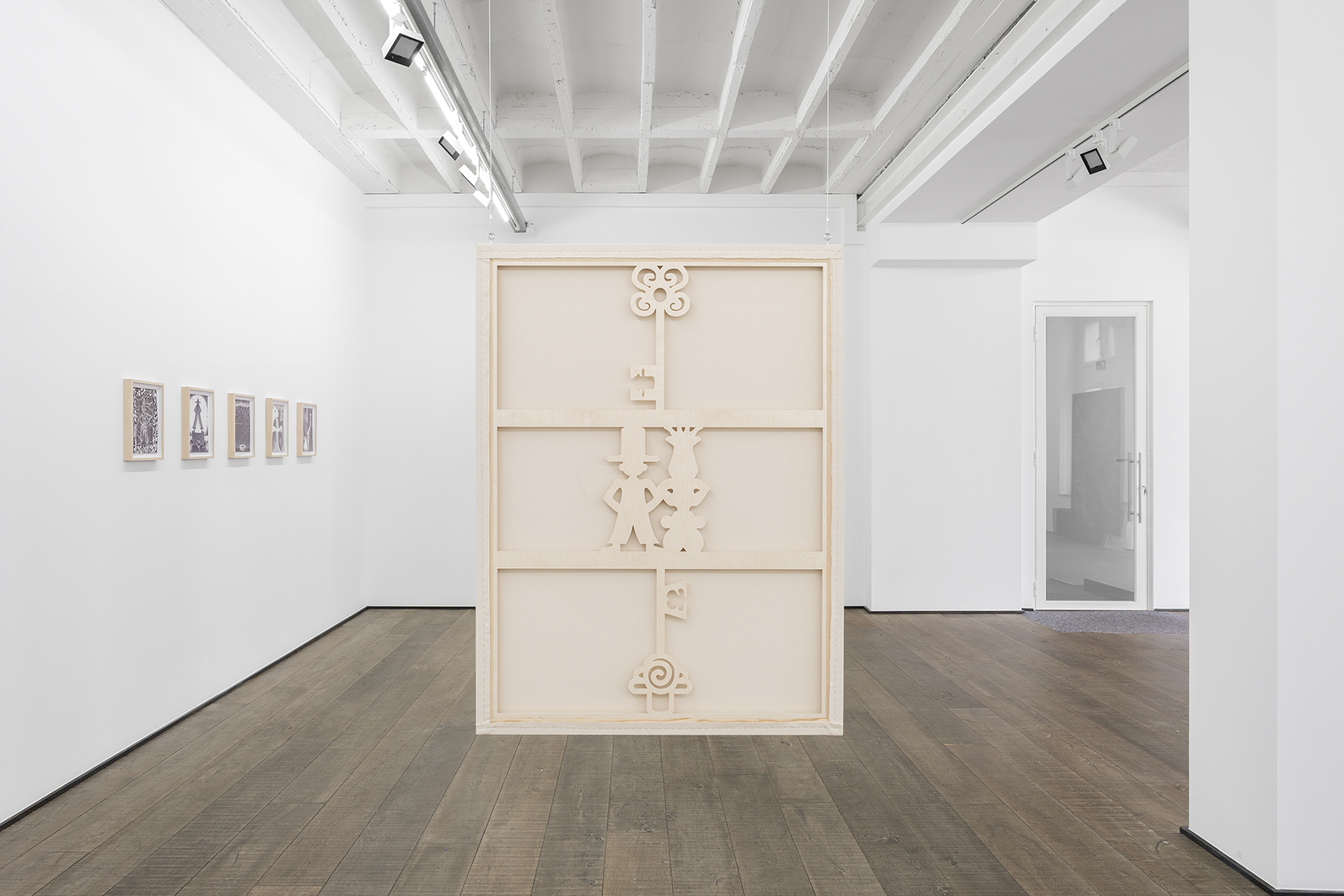
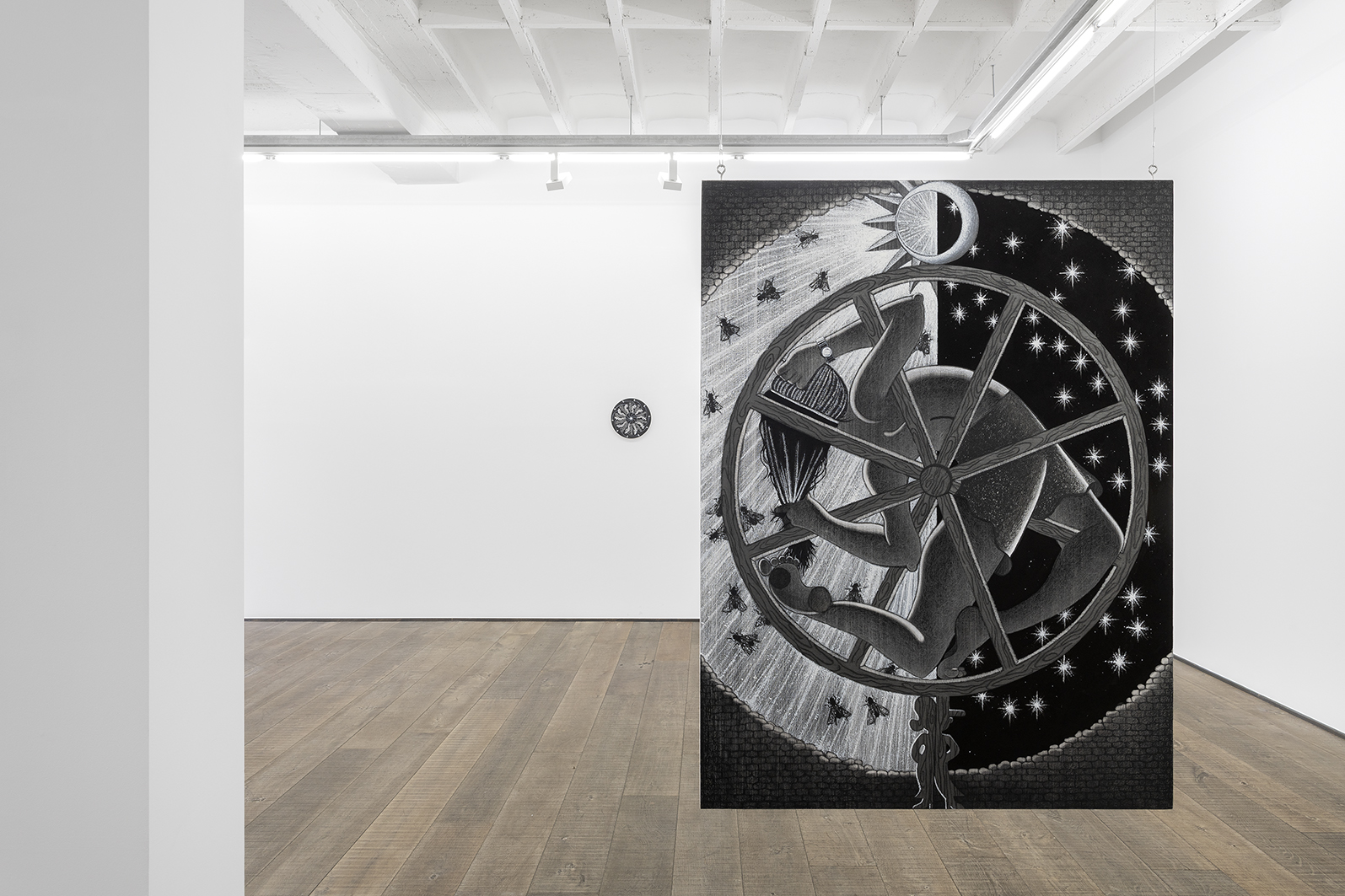
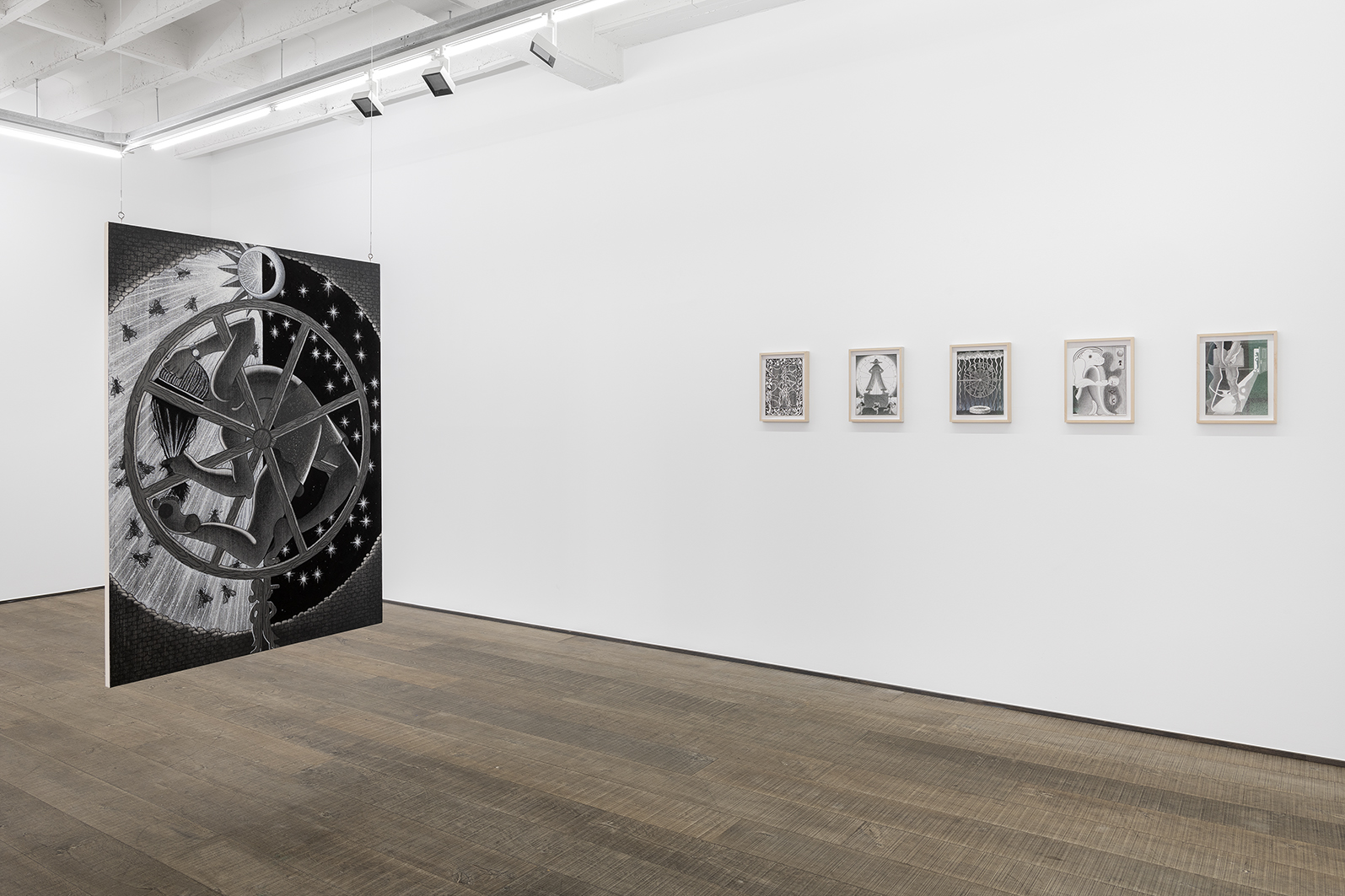
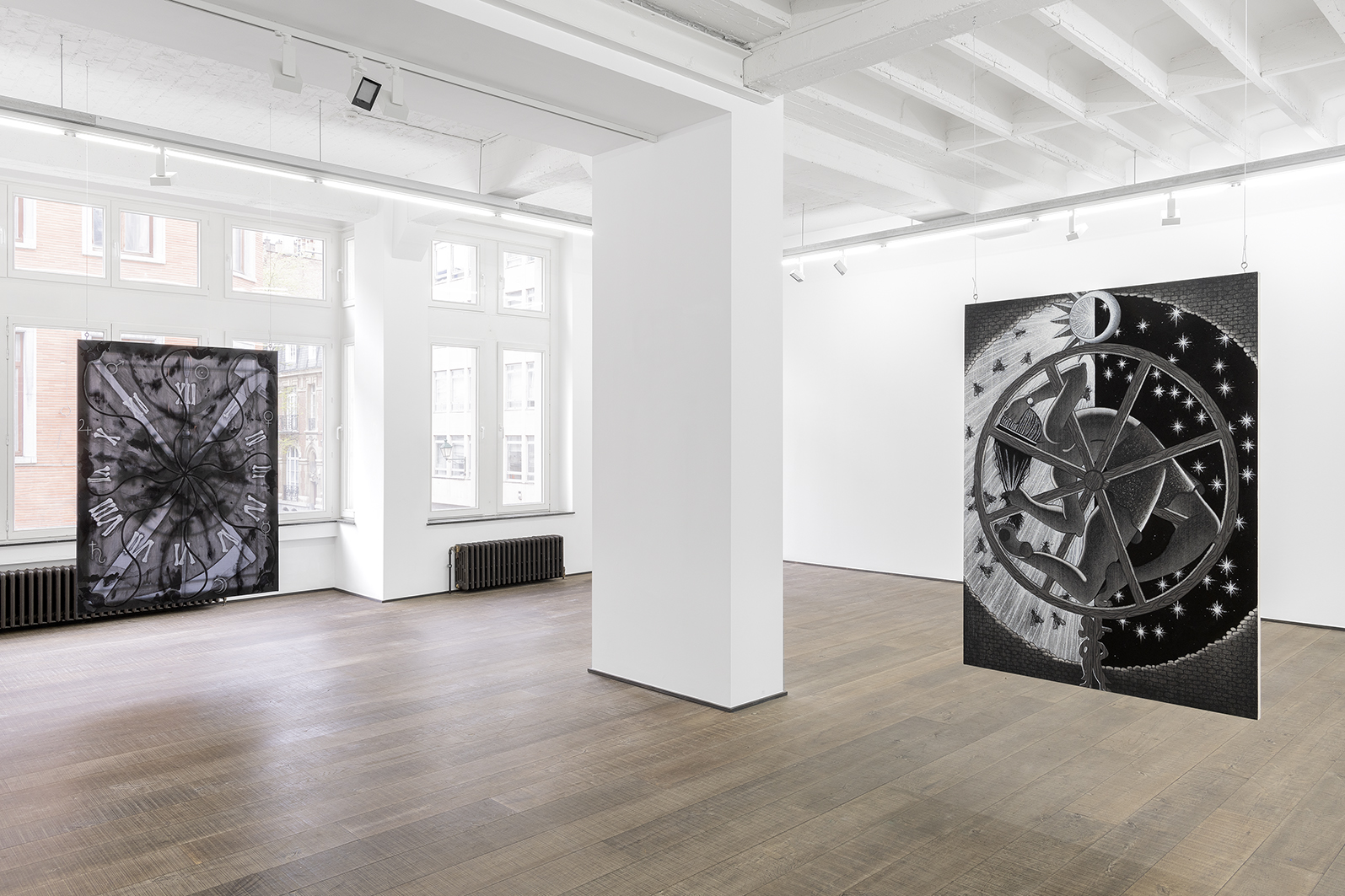
(01/11)Exhibition views
rodolphe janssen is pleased to present Riddles of the Id, Cindy Ji Hye Kim’s first exhibition at the gallery. Across paintings and works on paper, the artist continues to explore the formal qualities of the grisaille palette and stretcher bars, elements of image making that often go unseen. This unveiling carries over into the narrative of the images, where figures are held captive by what they cannot see.
The works in Riddles of the Id are executed in grisaille, a monochromatic palette typically used as a preliminary underpainting scheme to be painted over with color. Here, the grey, black, and white tones are no longer a hidden layer. The stretcher bars — a veiled supporting structure behind a picture — are also left exposed, as three large paintings are hung off the wall. Two are painted on translucent silk organza and backlit from windows, infusing their images with the shadows of the carved stretcher bars. The casted shadows sharpen and blur as the natural light changes, making the images themselves subject to the cycle of time.
Riddles of the Id features three characters that have appeared in the artist’s previous work: a housewife with beehive hair, a man with a tall hat, and a faceless schoolgirl. These figures make a metaphorical family: the authority of the parents becomes the authority of the past, creating a psychological minefield for the fated, doubt-ridden schoolgirl. The parents appear variously as keys and keyholes, a towering monument, in shadow, and in a circular formation evoking a wheel of fortune. The imagery of the wheel recurs in the form of a phenakistoscope, an animation disc that creates the illusion of movement when rotating. Here, it is eerily still, like the ominous housewife and distant father who haunt even those scenes where they do not appear.
The work in Riddles of the Id does what all images do: obscures what is present while making the absent visible. In her use of grisaille and exposed stretcher bars, Kim intervenes in the hierarchies of visibility that underlie two-dimensional representation while adhering to the constraints of the picture frame. What becomes visible after every uncovering is the act of uncovering itself, as Kim’s images pose new riddles with each layer unmasked.
-Zach Weinstein
Artworks
(13)-
![Cindy Ji Hye Kim, The International]()
(Artist) Cindy Ji Hye Kim (Title) The International (Year) 2020 (medium) Oil, enamel, acrylic, ink, graphite, charcoal on silk and birchwood (Dimensions) 162.6 x 121.9 cm;
64 x 48 in(Reference) CKim007 -
![Cindy Ji Hye Kim, The International]()
(Artist) Cindy Ji Hye Kim (Title) The International (Year) 2020 (medium) Oil, enamel, acrylic, ink, graphite, charcoal on silk and birchwood (Dimensions) 162.6 x 121.9 cm;
64 x 48 in(Edition) rearview (Reference) CKim007 -
![Cindy Ji Hye Kim, Riddles of the Id]()
(Artist) Cindy Ji Hye Kim (Title) Riddles of the Id (Year) 2020 (medium) Ink, graphite, charcoal on silk and birchwood (Dimensions) 162.6 x 121.9 cm;
64 x 48 in(Reference) CKim008 -
![Cindy Ji Hye Kim, Riddles of the Id]()
(Artist) Cindy Ji Hye Kim (Title) Riddles of the Id (Year) 2020 (medium) Ink, graphite, charcoal on silk and birchwood (Dimensions) 162.6 x 121.9 cm;
64 x 48 in(Edition) rearview (Reference) CKim008 -
![Cindy Ji Hye Kim, 8 Hours of Slumber, Labor & Leisure]()
(Artist) Cindy Ji Hye Kim (Title) 8 Hours of Slumber, Labor & Leisure (Year) 2020 (medium) Oil, acrylic, ink, graphite, charcoal on canvas (Dimensions) 162.6 x 121.9 cm;
64 x 48 in(Reference) CKim009 -
![Cindy Ji Hye Kim, 8 Hours of Slumber, Labor & Leisure]()
(Artist) Cindy Ji Hye Kim (Title) 8 Hours of Slumber, Labor & Leisure (Year) 2020 (medium) Oil, acrylic, ink, graphite, charcoal on canvas (Dimensions) 162.6 x 121.9 cm;
64 x 48 in(Edition) rearview (Reference) CKim009 -
![Cindy Ji Hye Kim, Reign of the Idle Hands #4]()
(Artist) Cindy Ji Hye Kim (Title) Reign of the Idle Hands #4 (Year) 2020 (medium) Oil, acrylic, ink, graphite, charcoal, pastel on birch wood (Dimensions) ø 30.5 cm;
ø 12 in(Reference) CKim010 -
![Cindy Ji Hye Kim, Reign of the Idle Hands #4]()
(Artist) Cindy Ji Hye Kim (Title) Reign of the Idle Hands #4 (Year) 2020 (medium) Oil, acrylic, ink, graphite, charcoal, pastel on birch wood (Dimensions) ø 30.5 cm;
ø 12 in(Edition) detail (Reference) CKim010 -
![Cindy Ji Hye Kim, Riddles of the Id]()
(Artist) Cindy Ji Hye Kim (Title) Riddles of the Id (Year) 2020 (medium) Graphite, charcoal, oil pastel, ink on paper (Dimensions) 30.5 x 22.9 cm (Reference) CKim005 -
![Cindy Ji Hye Kim, Libido Dominandi]()
(Artist) Cindy Ji Hye Kim (Title) Libido Dominandi (Year) 2020 (medium) Graphite, charcoal, oil pastel, ink on paper (Dimensions) 30.5 x 22.9 cm (Reference) CKim004 -
![Cindy Ji Hye Kim, The Ninth Wheel]()
(Artist) Cindy Ji Hye Kim (Title) The Ninth Wheel (Year) 2020 (medium) Graphite, charcoal, oil pastel, ink on paper (Dimensions) 30.5 x 22.9 cm (Reference) CKim006 -
![Cindy Ji Hye Kim, Oedipus to Hamlet]()
(Artist) Cindy Ji Hye Kim (Title) Oedipus to Hamlet (Year) 2020 (medium) Graphite, charcoal, oil pastel, ink on paper (Dimensions) 30.5 x 22.9 cm (Reference) CKim002 -
![Cindy Ji Hye Kim, Female Legacy]()
(Artist) Cindy Ji Hye Kim (Title) Female Legacy (Year) 2020 (medium) Graphite, charcoal, oil pastel, ink on paper (Dimensions) 30.5 x 22.9 cm (Reference) CKim003

